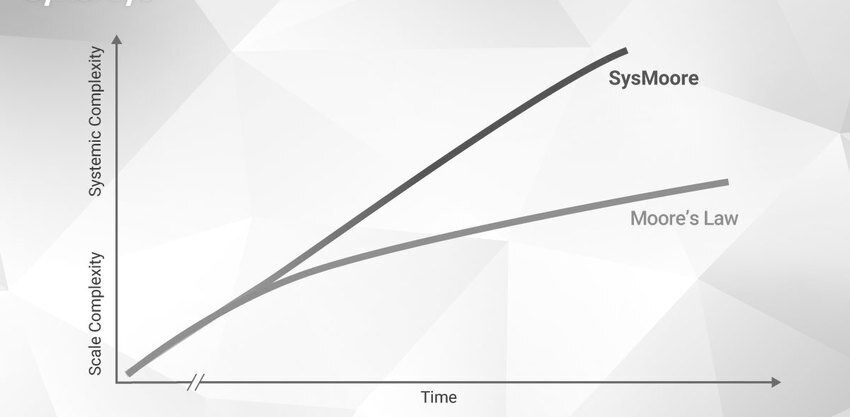Introduction
Moore’s Law, named after Intel co-founder Gordon Moore, describes the observation that the number of transistors on a microchip doubles approximately every two years. While initially a principle guiding the development of computer hardware, Moore’s Law has transcended its technological origins to become a mental model with broader implications. Understanding this model is crucial in decision-making processes as it influences our expectations of rapid advancement and can lead to biases that affect personal, business, and public policy choices. In this blog post, we will delve into Moore’s Law, explore its psychological underpinnings, provide practical examples, and offer strategies to avoid the pitfalls of this mental trap.
The Relevance of Moore’s Law
Moore’s Law is relevant to decision-making processes because it shapes our expectations of technological progress. Its influence extends beyond the realm of computing and permeates various aspects of our daily lives. Recognizing the implications of Moore’s Law helps us make more informed decisions that align with reality and avoid irrational choices driven by unrealistic expectations.
Anchored in Human Psychology and Everyday Prevalence
The concept of Moore’s Law is anchored in human psychology and manifests in several contexts:
Personal Life: Consumer Electronics
Moore’s Law affects our personal technology choices. Consider the scenario of purchasing a new smartphone. Many consumers expect each iteration to be significantly faster, more powerful, and feature-rich than the previous one. Falling prey to this fallacy might lead individuals to make hasty and unnecessary upgrades, driven by the belief that their current device will rapidly become obsolete.
Business Scenario: Technology Investment
Businesses often face decisions regarding technology investments. The expectation of exponential growth can create pressure to constantly upgrade hardware and software systems. Failing to critically assess the actual needs and potential return on investment may lead companies to allocate resources inefficiently, chasing the latest technology trends without considering their true value.
Public Policy: Technological Infrastructure
Public policy decisions concerning technological infrastructure are also influenced by Moore’s Law. Governments may face pressure to invest heavily in infrastructure based on the belief that exponential technological growth necessitates constant expansion. However, the failure to carefully evaluate the long-term implications and consider alternative approaches can lead to wasteful spending and inefficiencies.
Mental Biases and Psychological Underpinnings
Several mental biases contribute to the pitfalls associated with Moore’s Law:
Optimism Bias: Humans tend to be overly optimistic about the future, expecting progress and improvement to continue at an accelerated pace. This bias leads to an overestimation of technological advancements, making it challenging to assess the real potential and timeline of innovations.
Anchoring Bias: People often rely on initial information or reference points when making judgments. In the case of Moore’s Law, individuals may anchor their expectations to the historical pattern of exponential growth, disregarding the potential limitations or challenges that may arise.
Status Quo Bias: People have a tendency to prefer familiarity and the status quo. When it comes to technology, individuals may resist change, clinging to outdated systems or devices, underestimating the pace of innovation and the benefits of embracing newer technologies.
Avoiding the Trap of Moore’s Law
To avoid succumbing to the fallacies associated with Moore’s Law, consider the following strategies:
Balanced Evaluation: Take a balanced and critical approach when assessing the potential impact of technological advancements. Consider multiple sources of information and seek expert opinions to gain a comprehensive understanding of the limitations and realistic timelines of technological progress.
Long-Term Vision: Focus on long-term goals and consider how technological investments align with broader objectives. Avoid making decisions solely based on short-term expectations driven by the assumption of exponential growth.
Cost-Benefit Analysis: Conduct thorough cost-benefit analyses before making technology-related decisions. Evaluate the actual value and necessity of upgrades or investments, considering factors such as compatibility, scalability, and potential risks.
Conclusion
Moore’s Law, as a mental model, has permeated various spheres of decision-making, influencing personal choices, business investments, and public policy. By recognizing the psychological biases associated with exponential technological growth and applying strategies to avoid falling into its trap, individuals and organizations can make more informed and objective decisions. Awareness, critical evaluation, and a balanced perspective are key in navigating the landscape shaped by Moore’s Law. Embracing these principles ensures that decisions align with reality and promote meaningful progress rather than being driven solely by unrealistic expectations.
